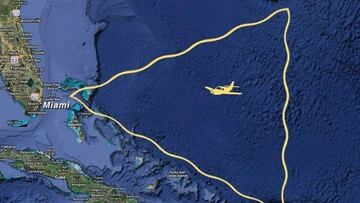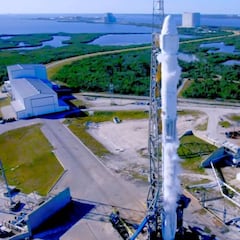Has the mystery of the Bermuda Triangle been solved?
A scientist has put forward a theory that he claims explains the supposedly supernatural properties of an area famous for disappearances.

The Bermuda Triangle has vexed scientists for decades, with tales of aircraft and ships disappearing without trace in the area feeding the mythology of the supernatural properties of a swathe of sea measuring over 600,000 square miles. The Bermuda Triangle itself is an equilateral triangle made up of three vertices roughly stretching from Miami to the islands of Bermuda and Puerto Rico in the western North Atlantic Ocean. Among the most famous incidents involving the Bermuda Triangle are the disappearance of the HMS Atalanta in 1880, the USS Cyclops in 1918 and Flight 19, a training flight of five TBM Avenger torpedo bombers, which vanished without trace in 1945.
However, many experts have sought to debunk the mystery of the Bermuda Triangle and now a 74-year-old Swedish scientist resident in Australia and a Sydney University fellow, Karl Kruszelnicki, has carried out a meticulous analysis of the area and believes he has come up with the answer.
On September 7, History’s Greatest Mysteries returns with a team of experts who dive underneath the surface to solve one of the Bermuda Triangle’s mysteries: the disappearance Flight 19. Enjoy this clip, and tune next week at 8/7c to watch it all unfold on The HISTORY Channel. pic.twitter.com/4DePVrO6nR
— HISTORY (@HISTORY) August 31, 2021
US Coast Guard: nothing to see here
Kruszelnicki maintains that the only reason ships and aircraft disappear without trace in the Bermuda Triangle is because of its proximity to the Equator and the United States, “which means there is a lot of traffic.” The scientist provides a snippet of data to back his theory: “According to [insurer] Lloyd’s of London and the US Coast Guard, the number of disappearances in the Bermuda Triangle is the same as in any other part of the world.”
NASA theory based on hexagonal clouds
There have been some 75 disappearances involving ships and aircraft in the Bermuda Triangle, according to a report by Honduran daily La Tribuna, which also includes a theory posited by meteorologists based on NASA satellite images that rare hexagonal clouds in the area, which create air bombs that can hit at speeds of up to 170 mp/h, are responsible for the high number of accidents inside the Bermuda Triangle.
Related stories
Backing Kruszelnicki’s assertion is the fact that a majority of pilots and ship’s captains that have gone missing inside the Bermuda Triangle were relatively inexperienced. Added to the geographical location and the climatological peculiarities of the area, and the amount of traffic, the Swedish scientist’s theory appears to be plausible.
However, the legend of the Bermuda Triangle, the interest it stirs up (and the tourism revenue it generates) and the number of movies, books and documentaries about its apparent supernatural powers will continue to maintain its mystery, even if that “mystery” is as easily explained as Kruszelnicki suggests.


